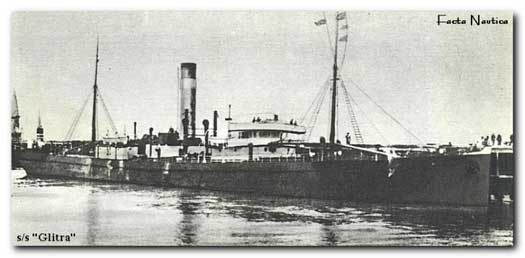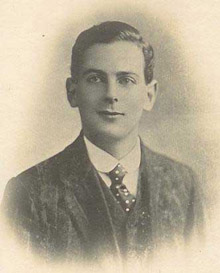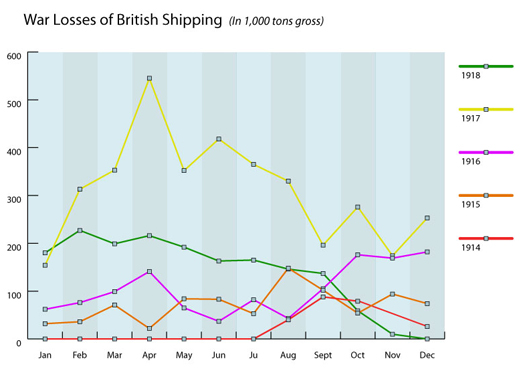Through Troubled Waters
The Glitra, a small steamer carrying a cargo of coal, coke, iron plates and oil to Stavanger, was sunk by enemy action on October 20, 1914, making her the first British loss in the Great War > (ON 79247, 1914, MHA). It is estimated that, by the outbreak of war, British merchant vessels transported between two-thirds and one-half of the world's commodity trade. (Halpern, 65) In the preceding sixty years, world trade had quadrupled. Imports were no longer limited to specialized products but included raw materials and foodstuffs. To maintain the flow of essential supplies, the British government requisitioned approximately 10,000 merchant ships to act as cruisers, troopships, hospital ships and freighters. It was only through keeping the lines of supply open across the Atlantic and Mediterranean that the war effort could continue.

The personnel of the merchant marine performed its service in various ways. The principle duty lay in manning the vessels taken over by the Admiralty for carrying out the tremendous task of transporting and supplying the British Army. But the initial stages of the First World War revealed a navy unprepared to defend the merchant marine against Germany's unrestricted submarine warfare. Merchant shipping paid a heavy price: casualties reached a peak in the bitter winter months of 1918; 14,661 men lost their lives as a direct result of enemy action; 3,295 were interned as prisoners-of-war. At least 570 Canadians were among the dead. (Baileau, 21)
From ship to ship, the experience of being torpedoed was similar: the suspicious hull on the horizon, the conning tower, the stream of bubbles, the gunfire, or the torpedo without warning, and the hasty rush for the boats. Officers, crew, Chinese, lascars, and sometimes terrified women and children, the wounded, the sick, the burned—for everyone on board the choice of lifeboat meant the difference between life and death. Some boats were picked up at once. Others drifted for days. Many simply disappeared forever.

It was through the efforts of a family historian that the research team discovered Seaman William Jones. To avoid conscription, he was encouraged by his father, a captain, to join the merchant marine. He joined the Mersario (Official Number 121350, 1917) in September 1917. Two weeks later, while sailing to Italy with a cargo of coal and coke, it was torpedoed off the Moroccan coast. The ship sank with the loss of three crew members, including William Jones. The survivors took to the lifeboats and were picked up the following morning by the French steamer La Somme.
Perhaps the master thought to take the Crew Agreement with him because it still exists in the regular Agreement archive. William Jones' details are there, and so too are the details of the fireman killed when the shell exploded. There were eight firemen on board, all of them Arab. The unfortunate Mohamed Hagar had been with the ship for four months having joined in Port Said, Egypt.

